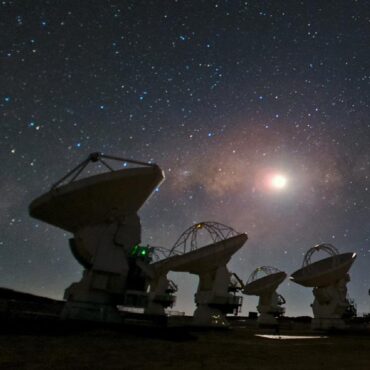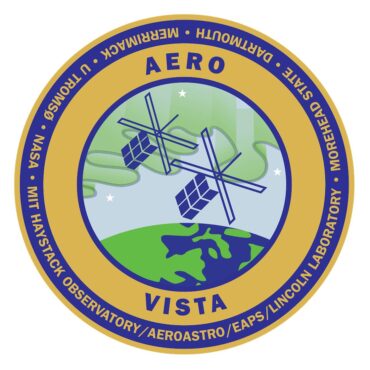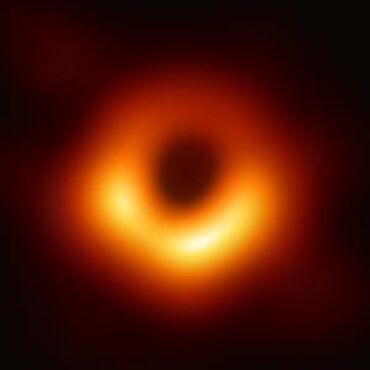
Geoffrey Crew
Research Scientist Supporting the Event Horizon Telescope (observation & correlation), the ALMA Observatory (ALMA Phasing Project), and the AERO-VISTA CubeSat missions (science and software).I am a space physicist/software engineer with over 4 decades of experience writing software and using computers to accomplish cutting-edge science in a variety of contexts. My current work is spread across several projects: the Event Horizon Telescope (EHT), the ALMA Phasing Project (APP), and the AERO-VISTA CubeSat missions.
The EHT delivered the first image of the shadow of a black hole: that of the supermassive black hole at the center of the M87 galaxy. The EHT uses the technique of very long base interferometry (VLBI), which allows distant radio observatories to combine their signals and produce some of the highest angular resolution measurements ever made. My work for the EHT is dominated by observational support and the VLBI correlation and analysis work. As part of that effort, I am a contributor to the DiFX open software correlation project, supporting the Haystack Observatory Post-processing System (HOPS) and the PolConvert tools, which are key to the EHT’s work. My work at Haystack began with the development of high-speed recording technologies that form the basis of the highly successful Mark 6 recorders now in use at all EHT sites.
The ALMA Phasing Project was launched to bring the ALMA (Atacama Large Millimeter/Submillimeter Array) Observatory into the VLBI fold. I was the software architect of that effort, which delivered the high-impact 3mm and 1.3mm observations of 2017. The name of the project is derived from the phasing calculations that allow the combination of some forty 12m ALMA dishes to produce one exceptionally sensitive signal for use in VLBI. Currently the project is in a second phase that will deliver true sub-millimeter VLBI as well as spectral-line observations at 3mm.
The AERO-VISTA mission is a combined two-CubeSat mission to put a Vector Sensor into orbit through the Earth’s auroral zones in order to make new measurements that answer decades-old puzzles on wave activity in that region. The Vector Sensor is a novel combined electric and magnetic field sensor that not only is sensitive to wave activity, but should also able to ascribe propagation information to any detected emissions.
Prior to joining the Haystack Observatory, I had extensive experience in several domains of space physics. My most recent mission was the NASA IBEX (Interstellar Boundary EXplorer) small explorer, which provided the first image of the heliosphere made with energetic neutral atoms. IBEX employs two extremely sensitive detectors that monitor the (rather weak) flux of interstellar neutrals atoms. I designed and built the software for the IBEX science operations center, which has now operated through a full solar cycle and provided much additional data about the local interstellar medium.
I was a key contributor to two previous NASA small satellite missions, HETE-1 and HETE-2 (High Energy Transient Experiment/Explorer). HETE-1 was lost due to a rocket failure, but HETE-2 exceeded expectations. These satellites flew a novel high-performance, embedded computing architecture which managed a suite of gamma, x-ray, and optical instruments. These were coupled to a powerful ground network of more than a dozen telemetry stations—all with the goal of delivering real-time gamma-ray burst (GRB) localizations. The system performed as designed, and it enabled the ground multi-wavelength follow-up that ultimately answered almost all of the remaining questions in that field. Specifically, HETE-2 taught us that very likely all GRBs have afterglows and that the so-called “long” GRBs are in fact explained by certain supernova explosions. The “short” GRBs were characterized by HETE-2, and presumed to be the result of the neutron star-neutron-star collisions as recently explained by the recent LIGO and VIRGO results. My end-of-mission work to adapt HETE-2 to exoplanet detection was the precursor to the highly successful, recently launched TESS (Transiting Exoplanet Survey Satellite).
Prior to HETE-1, I supported the calibration of the Solid-state Imaging Spectrometers (SIS) launched on the joint ISAS (Japan)- NASA(US) ASCA (Advanced Satellite for Cosmology and Astrophysics) mission in 1994. This instrument was one of the first combined imaging and spectroscopy instruments—and was a pathfinder for the highly successful workhorse instrument (ACIS), which has made most of the Chandra x-ray observations for the past two decades in space and was calibrated with software that I wrote.
My Ph.D. is in theoretical plasma physics; that training was undertaken with plan of working in the laboratory fusion energy effort. This plan was upset when the US effort was seriously curtailed in the early 1980s by an administration seriously lacking in vision. I was fortunate to be able to pivot to the study of equally interesting and challenging projects in the ionospheric/magnetospheric/space-plasma physics environment that surrounds us. My work there was focused on magnetospheric-ionospheric coupling and particle acceleration problems. In particular, I helped explain the underlying mechanisms for the creation of energetic ion upflows into the magnetosphere.

APP: ALMA Phasing Project
Developing very long baseline interferometry (VLBI) capabilities for the ALMA Observatory in Chile

AERO-VISTA CubeSat mission
A NASA twin CubeSat mission for auroral radio science and space interferometry technology.

Event Horizon Telescope
The Event Horizon Telescope is obtaining images of nearby supermassive black holes with ultra-high angular resolution to see down to the scale of the event horizon.